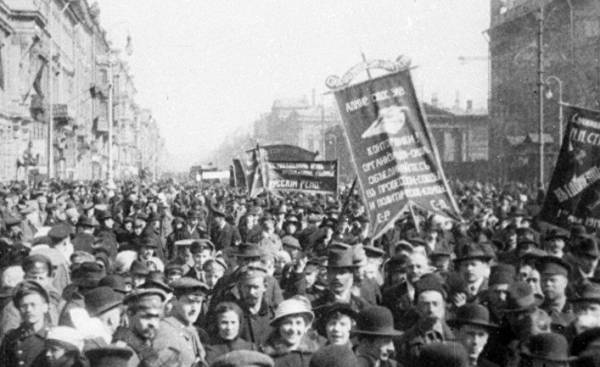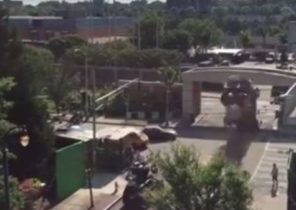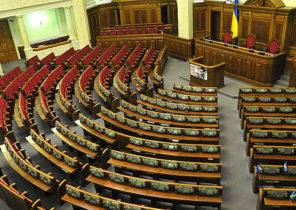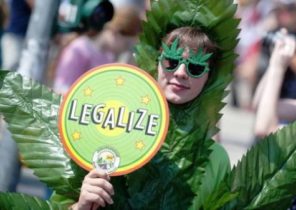
On the 12th floor of a rundown industrial building in Sevane — it is unlikely that there would be co-located Orthodox Church of the Holy apostles Peter and Paul, with its Golden icons, altar crosses and Holy relics, where his father Denis Pozdnyaev holds daily services for the Russian Orthodox community — the priest calmly tells of the crisis of emigration, which eclipsed the current tragedy in Syria and who left an indelible mark in the history of China and Hong Kong.
In March marking the centenary of the first of two Russian revolutions in 1917. It was in St. Petersburg (formerly Petrograd) and caused the abdication of Tsar Nicholas II. It provoked in Russia a bloody civil war that lasted five and a half years and changed the course of world history. It led to a mass Exodus of refugees known as the “white emigration” or “white Russian” who remained loyal to the deposed tsarist regime, and opposed the “red Bolsheviks”. The Bolsheviks Vladimir Lenin seized control of Russia in October, after the second revolution.
In February, he received information about what Hong Kong has adopted the first — and at that time the only — of the Syrian refugees, and in December 2015 the UN high Commissioner for refugees in Beijing told local media that in China, there were only nine refugees and 26 asylum seekers from Syria. The country remained largely inaccessible to four and a half million migrants desperately fleeing from the horrors of war-torn Syria, but 100 years ago the situation was different. China then sheltered many thousands of people who fled from civil war in Russia, and some of them later moved to Hong Kong as the ongoing persecution, where he formed a dynamically developing community.
“By the middle of 1920-ies in China, there were more than 300,000 Russians,” says the priest, telling how 14 years ago, shortly after his arrival from Moscow, he and his wife Kira was fascinated by the story of white Russians in Hong Kong.
“We decided to go to the cemetery in Happy valley, — says Kira. — Don’t ask why. We with Denis just like to walk around cemeteries.”
Shortly before that, Denis Pozdnyaev got an e-mail from Russia from a man seeking information about an ancestor named Nicholas Belanovsky, former Royal marine officer who left the country during the civil war. No one in Russia knew what happened to Belanovsky, but the first of about 170 Russian graves, which came Pozdnyaeva in Happy valley, was it.
“The “white Russian” became our first friend in Hong Kong,” says Kira.
Many immigrants from Russia were members of the armed forces, the nobles supported the regime or public figures, but it was only rough political definition, which encompasses those who were caught off guard by the chaos and the cruel vicissitudes of the revolution and the civil war.
Royal elite began to emigrate to the beginning of 1917, mainly to the European destinations, but some stayed at home to fight the Bolsheviks, with the support of the Western powers and Japan. By 1922 the population of the city-port of Vladivostok increased to 410 000 (97 000, recorded in 1916) as the retreat of the White army in the East.
“What horrors happened in Russia, so many people were forced to leave their homes,” says Nona Langley (née PIO-Ulsky), born in Hong Kong in August 1947, and studied their family history, publishing the results on the website pio-ulski.com.
In a telephone interview from the Australian Perth Langley says that in 1917 it was in the last months of pregnancy, the maternal grandmother of Anna Nozadze received a telegram from her husband, Colonel of the tsarist army, in which he begged her to leave their home in Baku, on the Caspian sea coast, and to join him in Vladivostok. Nozadze sold a diamond brooch, bought a ticket on the train and during the incredible journey on a snowy Russia with a length of 11 600 km gave birth to a daughter, Lila (mother Langley), and helped her in the only nearby veterinarian.
Others born in Hong Kong “white Russian” is the artist Paul Atroshenko, who now lives in Sydney and whose family suffered during the civil war, which claimed some eight million lives.
“My mother Antonina Atroshenko was born in 1916 in the family of a wealthy tsarist officer. Her mother was his lover and hung himself when the Bolsheviks killed him,” he says. His mother survived only because a baby took her in compassionate family. Brother of Antonina (the uncle Atroshenko) were not so lucky.
When 25 October 1922 Vladivostok was in the hands of the Bolsheviks, the civil war virtually came to an end, and Russian families fled to the nearby Chinese border, in fear for his life. They were sent to Harbin, the former since 1898 pseudo-Russian colony in the conduct of the engineers and the officials appointed by the Imperial regime for the construction and operation of the Chinese Eastern railway (CER) on the basis of concessions granted by China during the Qing dynasty. (A “white Russian” also settled on the site of modern Xinjiang.)
According to Langley, her father George PIO-Welscome, who later became head of the orchestra in the Hong Kong hotel was barely 13 when he and his mother and sister fled from Vladivostok to his 19-year-old brother in Harbin. He earned a living playing music, traveling to China throughout the 1920-ies.
“I remember my dad told me that his mother tore up all the documents confirming the relationship of our family with an officer in the Imperial fleet, because he feared that they could be shot or sent to Siberia, find out about the Bolsheviks,” she says.
At some time Harbin has become a wonderful retreat for white emigration and the Russian Orthodox Church.
“In China, the Russian Church and immigrants enjoyed full freedom,” says Denis Pozdnyaev, stating that the country had more than 100 Russian churches, 23 of them in Harbin. However, quiet times for 150 000 living in the zone of the CER Russians soon came to an end.
In 1924, when Beijing finally recognized the new Soviet government, the old Russian passports were declared invalid, and people, who rejected the chance to become Soviet citizens — that is to say the vast majority of “white Russians” — have become persons without citizenship.
Luba Estes (nee Skvortsova) was born in 1931 in Harbin “refugee status and persons without citizenship” birth certificate she never had. Her father Alexander Skvortsov (born. in 1893) lived in the city since his father was the chief justice of the Supreme court of Harbin. Received in 1918 in St. Petersburg, diploma engineer, Skvortsov worked on the CER.
“As a result of the Russian revolution of 1917, the “white Russian” family in Harbin, such as mine, to return to Russia could not,” says Estes, who grew up in Hong Kong and settled in St. Augustine, Florida, USA.
Many went from Harbin to Shanghai and other ports, when the Soviet officials, engineers and workers began to move into the zone of the CER, and the next wave followed the Japanese invasion of Manchuria in September 1931.
“Official settlement in Shanghai the Russians had, so they worked in the service sector was generally poor,” says the priest. More than just suffered by former members of the upper classes of society.
Charlie Chaplin, who wrote the script and directed the film “the Countess from Hong Kong” (1967) with Sophia Loren in the title role, said the film was the result of his trip to Shanghai in 1931 where he came across a number of titled aristocrats who had fled from the Russian revolution. They had no money, no country, and the situation is worse.
“The men worked as rickshaw-and women — dancers 10 cents for a dance. When the Second world war, many of the old aristocracy were killed, and the younger generation moved to Hong Kong, where their situation has become even worse.”
“Jobs for white Russians, such as my father lacked, and social welfare for the deprived of the nationality of the immigrants did not exist, — says Atroshenko, whose parents met and married in Harbin, and then fled to Shanghai. — Many Russians in Shanghai and Hong Kong because of his military past was in demand in the police or security. In Shanghai, wealthy Chinese families have hired former Russian soldiers as personal bodyguards”.
Langley believes that among the European elite, the Russians were considered social outcasts.
“They were on the same level with the locals, and possibly worse — they were not even allowed to join English clubs. I think to make a good career could not one married a “white Russian” woman is a Brit,” she says.
Her musically gifted father worked in prestigious hotels of Shanghai, where he met his future wife, Lila, who also fled with his family from Vladivostok in 1922 and Harbin in 1930.
“The first Russians arrived in Hong Kong in the 1930-ies,” says the priest, although the first mention of them in the newspaper South China Morning Post dates from 1925, when “June 28, 234 white Russians went from Shanghai to Hong Kong on the steamship “Empress of Canada”, to replace the Chinese crew of “Canada” and the crew of the “Empress of Asia” in Hong Kong”.
The first in Hong Kong, the Russian Orthodox Church, located at 12 Essex Crescent, Kowloon Tong, was established by father Dmitry Uspensky in 1934.
More and more Russians arrived in the city after the Japanese bombing of Shanghai in August 1937. When George and Lila PIO-Hulskie arrived in Hong Kong in November of the same year, when he was offered a position in the orchestra of the Hong Kong hotel, turned 21 since then, as they began their flight from war and political upheavals.
“My parents never spoke at home in Russian, and we hated the Soviets, says Langley. My parents have always supported the king.”
Father Atroshenko Ivan also managed in 1937 to move to Hong Kong. His pregnant wife and young son were ordered to return to Canton and get a fixed number of visas, but before their departure, at the end of August in the hospital, “Matilda” a baby boy named Paul.
Estes and her family made the same trip from Harbin to Shanghai. They wanted to escape as far as possible from the fighting in Shanghai, when her father in July 1938 was offered a job in the Construction and engineering company of Hong Kong (which is owned as Hong Kong hotel, family Kaduri).
“Former soldiers of the White army has also joined forces with the Hong Kong police to combat piracy and were held in the local jockey club as security guards racetrack,” says the priest, who believes that the relative wealth of the Russians came to Hong Kong in the 1930-ies, when they managed to collect funds for the construction of the Church. Its construction was, however, delayed due to the outbreak of the Second world war.
But lasting prosperity and peace again, briefly, for poor “white Russian” are trapped during the Japanese occupation of Hong Kong (December 1941-August 1945). Most of them witnessed acts of indiscriminate barbarism.
According to military archives, father Estes starlings fought with the volunteer defence corps Hong Kong and was a prisoner of the Japanese. Although the Russians and it was not citizenship, the majority living in the city managed to avoid internment, but had to make tremendous efforts to survive under occupation.
Older sister Langley told her that their dad came back one day with held in the Japanese officers ‘ club musical performance in a torn shirt and with a bloody back, because the soldier angered his inability to understand what songs they were asked to play.
Atroshenko remembers that as a child attended one of the meetings his father, an expert in the mining industry, during which he refused Japanese help with the re-opening of the local mines, and one of the angry officers threatened to behead.
“I was just a child, but those war years, held in Hong Kong, I remember it very well,” says Atroshenko.
After the war, however, began to seem a closed and conceited, he says.
“In Hong Kong at that time was based on the origin of the people and a strict hierarchy. In school, we knew of three girls, all of them received certificates of the secretaries; British girls earned twice more than Russian, and Russian is twice more than the Chinese. That’s the way it was.”
In 1953, his family left their house on Bowen road and moved to Australia.
Langley retained warm memories of life in Happy valley and an energetic and close-knit community of Russian immigrants: “We went to each other’s homes for parties and for Easter — in a Church where, I remember, arranged a great celebration”.
Maybe that racial hierarchy is convinced her father to apply for British citizenship in 1947 and officially change the name from PIO-Tulskogo on parks. He then got a job in a company “Hong Kong tramway”.
“I think my parents didn’t want us standing stigma of Russian immigrants — they wanted the house was dominated by the British atmosphere,” says Langley.
A series of letters sent to the journal Post in may 1947, demonstrates the contempt of many members of the colonial class were among them Russians.
“I personally believe that all Russians are the same, regardless of political affiliation — whether red, pink or white, as trusted old-timers who say, “scratch Russian — find a Tartar”,” —wrote one reporter.
In addition to the many Chinese who flooded the city after the Communist victory in the Chinese civil war in 1949, through the Hong Kong have been tens of thousands of Russians, estimated by the priest, although some of them visa to travel from China had to wait as much as 15 years.
“Over the past 15 months, Hong Kong became a point of expectations and a temporary home to about 1 000 white Russians refugees from China, said in a report published in the journal Post from July 12, 1965. — Many residents of the colony were accustomed to the refugees walking down the streets in their quaint peasant garb of the 19th century. But tourists still stop and stare in amazement at men’s casual pants and high laced shoes as well as women tied around the ankles with scarves”.
Further the article reads: “From the point of view of the refugees, accustomed to a simple life in Xinjiang province in Northwest China, Hong Kong was a strange and mysterious place. As one of the elderly immigrants, “cars in Hong Kong — more than flies there, where we came from””.
After 1949, most visitors stayed only for a few days, weeks, months, or years, took a medical checkup and the paperwork for moving to Australia, Canada, South America or somewhere else. In 1953 the Japanese government, for example, was granted permission to enter 86 white Russian who lived in Hong Kong since 1949.
“There are only a few: life in Hong Kong is very expensive, he was devastated by the war, and the streets are full of beggars Chinese. In Australia and the United States was simply more,” says the priest.
Decay beginning even Russian community established in the 1930-ies and left their mark not only in music but also in the national cuisine (Hong Kong soup popular to this day), art (Georgy Smirnov became a famous artist in Macau) and medicine (Solomon Bard founded the medical faculty at the University of Hong Kong).
“I remember all the families with which we were familiar at the time of their departure in the 1950s. Already by the 1960s almost no one left,” says Langley, whose parents remained in the city until his departure in Perth in 1973.
“Now there is nobody. I think in Hong Kong there are not more than one Russian family,” says Kira pozdnyaeva.
Characteristics of employment Skvortsova, from construction and engineering company of Hong Kong, which he received in preparation for the trip to the United States in 1952, can be found in the archive of the Hong Kong Heritage Project. The letter lists a number of major construction and infrastructure projects, which he oversaw as part of the recovery of Hong Kong after the war, including the first installation of air conditioning in hotel Peninsula.
As family members Atroshenko and PIO-Ulsky, it has experienced civil war, Japanese invasion of Manchuria, Chinese civil war, the Japanese bombing of Shanghai and the battle for Hong Kong. It is a journey from Russia to the United States through Harbin, Shanghai and Hong Kong was long and dangerous even in comparison with the movements of today’s refugees.
It is significant, perhaps, is the fact that in 1971, this “white Russian” has died in St. Petersburg — that in Florida.
Stuart Heather , a former naval officer and businessman from Kent County, England. Lives and works in Hong Kong, is a freelance writer and journalist. He loves his job, the sea and the family, but not necessarily in that order.







